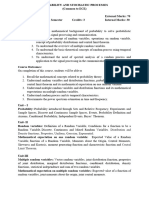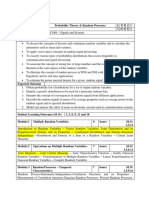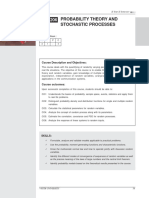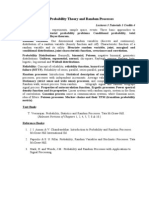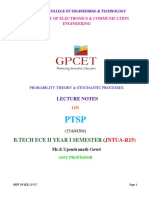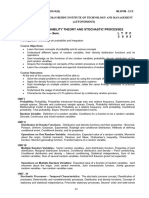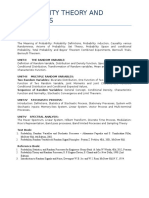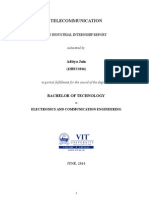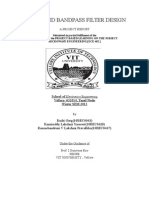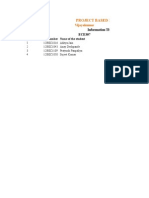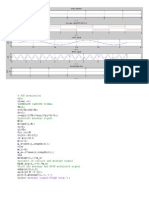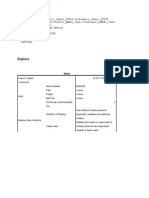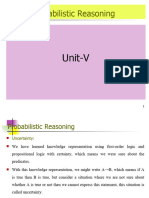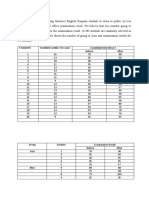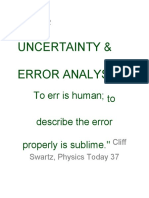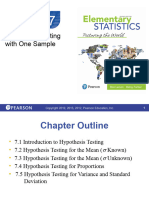0% found this document useful (0 votes)
60 views14 pagesWINTER 2014 - ECE201 - Probability Theory and Random Processes - Faculty - Dr.J.Vijayarangam - SLOT - D2 - Room - AB 612
The document outlines the units and topics covered in an ECE201 Probability Theory and Random Processes course taught by Dr. J. Vijayarangam. The five units cover: (1) probability, random variables, and distributions; (2) special distributions; (3) operations on random variables; (4) random processes including stationary and ergodic processes; and (5) special random processes and modeling of noise sources. Communication theory concepts are also briefly discussed including information exchange, uncertainty reduction, and mathematical topics needed.
Uploaded by
Aditya JainCopyright
© Attribution Non-Commercial (BY-NC)
We take content rights seriously. If you suspect this is your content, claim it here.
Available Formats
Download as PDF, TXT or read online on Scribd
0% found this document useful (0 votes)
60 views14 pagesWINTER 2014 - ECE201 - Probability Theory and Random Processes - Faculty - Dr.J.Vijayarangam - SLOT - D2 - Room - AB 612
The document outlines the units and topics covered in an ECE201 Probability Theory and Random Processes course taught by Dr. J. Vijayarangam. The five units cover: (1) probability, random variables, and distributions; (2) special distributions; (3) operations on random variables; (4) random processes including stationary and ergodic processes; and (5) special random processes and modeling of noise sources. Communication theory concepts are also briefly discussed including information exchange, uncertainty reduction, and mathematical topics needed.
Uploaded by
Aditya JainCopyright
© Attribution Non-Commercial (BY-NC)
We take content rights seriously. If you suspect this is your content, claim it here.
Available Formats
Download as PDF, TXT or read online on Scribd
/ 14









